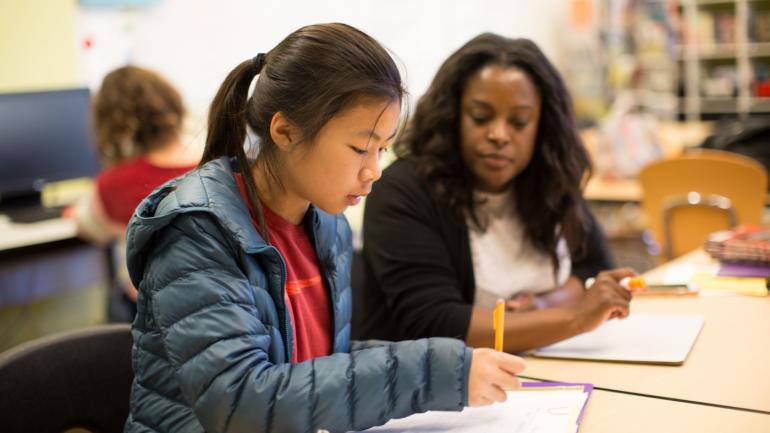
As part of their National Board Certification, Gateway Middle School Humanities Teachers, Elizabeth Colen and Lucy Hilarides, created a tool to help students read, understand, and analyze complex texts deeper.
The Layered Reading Approach is used in Gateway Middle School’s 8th grade humanities classes to examine difficult texts and instills a sense of ownership among students for their learning and reading comprehension.
It aligns with Gateway Middle School’s school-wide goal of advancing students reading skills in non-fiction work.
“When accessing a difficult text like the Constitution or Declaration of Independence, we want students to genuinely engage with the text and make their own analysis of historical events rather than reading someone else’s analysis in a textbook,” said Elizabeth Colen, 8th Grade Humanities Teacher at Gateway Middle School. “The Layered Reading Approach gives students a five step protocol to help them determine what the text says.”
The five steps to the Layered Reading Protocol include:
- Step 1: Overview
Students are required to read the text for a quick overview - no writing, just reading. - Step 2: Vocabulary
Students are asked to identify words they don’t understand, that seem important, or are different from what they would typically use in writing or in conversation. - Step 3: Meaning
Students are then asked to breakdown sections of the text and paraphrase each chunk in their own words. - Step 4: Summary
In step 4, students are asked to reread their paraphrasing and write a one sentence summary that best explains what the text is saying. In this step they are encouraged to think about the purpose of the text and the message the author is trying to convey. - Step 5: Question
Once students have summarized their document, they are asked to complete questions related to the reading to deepen their understanding. After each Layered Reading assignment, teachers score the students work and keep data on their student’s progress to garner a better understanding of what students still need to work on and what type of reading skills to implement further. Students keep data on their own progress and self-asses to determine how they are growing and what they need to focus on.
“By teaching students the steps involved in understanding complex texts and encouraging self assessment at the end of each assignment, we are empowering our students as readers and critical thinkers, and promoting skills that can be used beyond middle school,” said Colen.
According to Colen, “since implementing the Layered Reading Approach at Gateway Middle School, students’ ability to delve into and analyze text has definitely improved.” She is also seeing a shift in students being more reflective and mindful of their work.
Colen and Hilarides are big advocates of collaboration and have shared this tool and refined it alongside other schools and professional development groups like Facing History’s Middle School Consortium and the Academy of Alameda.